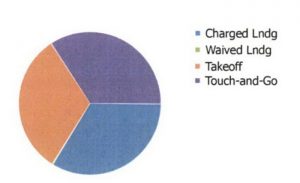Emergency Services: Council’s Creative Counting
RECORDS of the Scone Airport, obtained under freedom of information, reveal there were only seven emergency service aircraft landings at the airport during a 12 month period, despite Council’s claims that there are “two critical emergency services landings per day”.
Mayor Wayne Bedggood said at a public meeting he was surprised there were so many critical emergency services landings in Scone and it had been a key consideration for government funding the airport upgrades.
The breakdown of the seven emergency service aircraft were:
- four landings by the Westpac Rescue Helicopter;
- two landings by Ambulance, and
- one landing by PolAir.
In previous stories, Richard Jones, chief executive officer of the Westpac Rescue Helicopter said the certification of Scone airport would have no impact on their service in the area and the Rural Fire Service agreed. Read: Council’s Critical Emergency Claims Challenged.
Further, Ambulance aircraft use in this area is for non-urgent patient transport, with the Westpac Rescue Helicopter and road ambulance providing “critical emergency services.”
The one instance of the Police using the airport, was the PolAir helicopter.
So how can Council claim there are “two critical emergency services landings per day”?
What the data shows:
- There were 700 aircraft movements, between July 2018 and June 2019, in the list provided by Council – this roughly equates to 1.9 movements per day;
- The 7 aircraft movements identified, represent only 1% of all aircraft movements on the list;
- The remaining 99% are predominantly associated with commercial fire fighting operations conducted by Pay’s Air Service – which are based at Scone airport and contracted to government agencies throughout several states in Australia;
- All landing fees for “critical emergency services” are waived by Council;
- In the document’s pie charts, it shows only Westpac, PolAir and Ambulance landing fees were waived, whereas the commercial operations associated with firefighting aircraft here were not. (See pie charts below).
While Pay’s Air Service is a significant commercial operator at the Scone Airport and a key employer at the airport, Council has categorised these movements as commercial, as evidenced by them charging landing fees; yet Council’s claims of “two critical emergency services per day” seem to include these 700 commercial flights.
Council’s Continued Claims
Council has continued to make the claim that there are “two critical emergency service landings per day”, which is contrary to the flight movement data. Read: Editorial: Enough of the Emergency Spin!
Council has continued to claim unless the airport is certified for instrument flight rules by August 2020, the airport will close – which the Civil Aviation Safety Authority has confirmed is not the case: CASA Confirms: Scone Airport Won’t Close.
Council has continued to claim unless the airport is certified for instrument flight rules by August 2020, critical emergency services will not be able to use the airport – which the emergency services identified by Council have confirmed is not the case: Council’s Critical Emergency Claims Challenged.
Pie charts showing waived landing fees:
February 2019 – shows no landing fees were waived, no emergency services were recorded for that month, but 84 commercial fire aircraft movements were recorded.
April 2019 – shows a tiny percentage of landing fees were waived. This correlates to two Ambulance aircraft movements (landing and take off), 15 commercial fire aircraft movements were recorded + general private and commercial use.
All other pie charts displaying landing fees in the document, only show “waived fees” when Westpac, Ambulance or PolAir have used the airport, not for commercial fire fighting aircraft use.
- February 2019: Landing Fees.
- April 2019: Landing Fees.
Tags: Scone Regional Airport
 scone.com.au
scone.com.au
